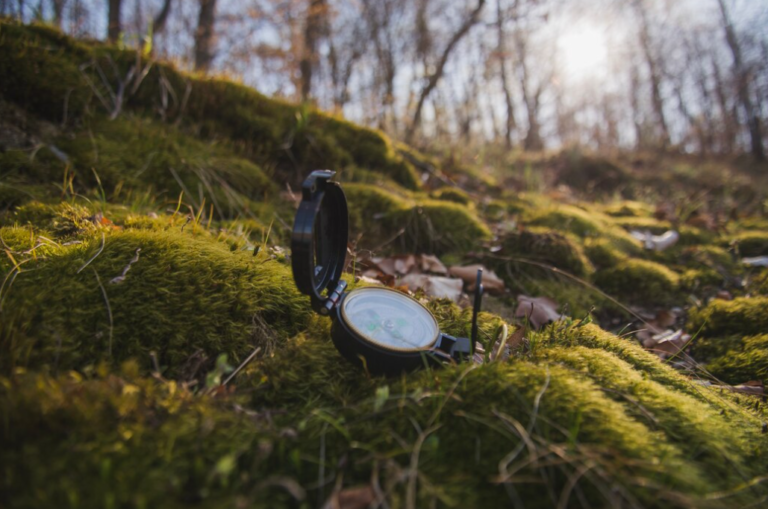The vastness of nature is a marvel, a tapestry of ecosystems that are in a constant state of flux. But how do scientists and researchers track the movements, habits, and patterns of the myriad species that call this planet home? Enter tracking device for animals, a game-changer in the world of wildlife research and conservation. These advanced tools offer an intimate glimpse into the lives of creatures, shedding light on their migration routes, daily habits, and the challenges they face in their natural habitats. Through these devices, we’re not just observers; we become active participants in the intricate dance of life on Earth.
What are Animal Tracking Devices?
Animal tracking devices, at their core, are instruments used to monitor and document the movements and behavior of animals. These state-of-the-art tools have paved the way for innovative studies in the field of wildlife research and conservation. They provide scientists with a deeper insight into the daily lives, habits, and migration patterns of various species, from the smallest birds to the largest mammals.
One of the most popular types among these tools is animal tracking tags. These tags are often lightweight, designed to minimize any disruption to the animal’s regular activities, and can be attached externally or, in some cases, implanted. Depending on the technology they employ, these tags can offer real-time data or store information for future retrieval.
Types of Tracking Devices
- Radio Collars: The most traditional type, these use a radio transmitter and a battery. Animals are tagged, and researchers can then track their movements using a receiver;
- GPS Collars/Implants: Similar to radio collars but use GPS to give exact locations. These can be set to record data at specific intervals, providing a detailed map of an animal’s journey;
- Satellite Trackers: These use satellites to monitor an animal’s position. Perfect for tracking long migrations across continents or oceans;
- Acoustic Tags: Used mainly for marine animals, they emit sound waves detected by underwater receivers.
Benefits of Using Tracking Devices
The advantages of employing tracking devices in the realm of wildlife are multifaceted and far-reaching. Firstly, they serve as indispensable tools for research and study, offering an unprecedented wealth of data concerning animal migration patterns, daily routines, and territorial behaviors. Such comprehensive insights are of immeasurable value for scientists seeking to delve into intricate aspects of animal behavior, from mating rituals to the ecological intricacies of their habitats. Beyond advancing our knowledge, these devices play a pivotal role in the conservation of endangered species, offering a means to continuously monitor these vulnerable populations, identify threats, and formulate effective strategies for their protection and restoration. Moreover, they contribute significantly to mitigating human-animal conflicts, particularly in regions marked by high population density, by enabling a nuanced understanding of animal territories and movement patterns. Finally, in an era where zoonotic diseases pose a global threat, tracking devices aid in the critical task of disease control by facilitating the comprehension and management of diseases that can jump between animals and humans, ultimately enhancing public health and ecological stability.
AWC’s Tech Collars: Tracking Feral Cats’ Long Journeys

At the Scotia Wildlife Sanctuary located in western New South Wales, AWC introduced cutting-edge Iridium GPS collars on 12 feral cats since the onset of June. Custom-made for AWC by the creator, these collars mark the inaugural use on feral cats.
These collars transmit data through satellite directly to a computer, enhancing the capacity to collect and examine movement patterns. Preliminary findings are remarkable: a single feral cat traveled over 125 kilometres, and two other cats journeyed more than 60 kilometres.
Such travel patterns had not been documented before. Gaining insight into such behavior is vital for formulating feral cat management strategies, including the potential development of a gene drive solution. Words from Atticus Fleming, Chief Executive of the Australian Wildlife Conservancy: GPS/Iridium Pod equipped with VHF Collars.
| NANO | SMALL | MEDIUM | |
|---|---|---|---|
| Weight Range | 5g-20g | 20g-100g | 130g-250g |
| Suitable Animals | Birds, bats, and other tiny mammals | Animals that weigh at least 500 grams | Foxes, Tasmanian Devils |
| Data Recovery Method | UHF Wireless | UHF Wireless | Satellite |
| Data Transfer Range | Up to 30km | Up to 30km | Global |
| Drone Data Downloading | Supported | Supported | Not Applicable |
| Base Station Battery Life | 2 days | 2 days | Not Applicable |
| Base Station External Power | Supported | Supported | Not Applicable |
| Change GPS Schedule in Field | Supported | Supported | Supported |
| Drop Off | Not Applicable | Supported | Supported |
| VHF Transmitter | Optional | Supported | Supported |
| Smart GPS | Supported | Supported | Supported |
| Activity Logger | Supported | Supported | Supported |
| Factory Sealed | Supported | Supported | Supported |
| Best in Habitat Type | Open-Light | Any | Any |
| GPS Precision Control | Supported | Supported | Supported |
| Rechargeable | Optional | Optional | Optional |
| Bluetooth | Supported | Supported | Supported |
| Temperature Sensor | Supported | Supported | Supported |
| Accelerometer | Supported | Supported | Supported |
| Light Sensor | Not Applicable | Not Applicable | Not Applicable |
| Collar | Supported | Supported | Supported |
| Backpack | Supported | Supported | Supported |
| Implant | Not Applicable | Supported | Not Applicable |
| Custom Design | Supported | Supported | Supported |
| DIY Kits Available | Supported | Not Applicable | Not Applicable |
| Discount Price Eligible | Supported | Supported | Supported |
| Refurbishment Available | Supported | Supported | Supported |
Wildlife Tracking Devices To Rely On

Experts in the field produce custom GPS wildlife tracking devices suitable for small mammals, herps, and birds. There’s also a specific range of GPS wildlife tracking tools designed for larger animals such as feral pigs, crocodiles, and alligators.
- A standout development from 2018 is the Hybrid GPS, weighing in at just 5 grams, including its battery. Marketed as the Nano GPS, a significant feature of this device is its enhanced GPS data transfer range, making it apt for use with unmanned aircraft for long-range data retrieval. Demonstrations have shown data transfer capabilities of up to 30 kilometers;
- In 2017, the introduction of the Q4000ER, branded as the Small GPS, marked a significant advancement. Its blend of long-range data transfer and a high-performance GPS antenna makes it versatile for a variety of projects;
- The year 2016 welcomed a compact GPS with an Iridium satellite transceiver, allowing for GPS data transmission via satellite. Offered as the Medium GPS, these collars weigh as little as 130 grams. Without making direct comparisons, it’s worth noting that this product is competitive in terms of being one of the lightest GPS Iridium collars available.
Conclusion
In conclusion, tracking devices for animals have revolutionized the realm of wildlife research and conservation, offering a profound understanding of the intricate lives of creatures across the planet. These advanced tools, from radio collars to satellite trackers, have unveiled migration routes, daily behaviors, and critical data for scientists and conservationists. The recent use of Iridium GPS collars on feral cats at the Scotia Wildlife Sanctuary exemplifies their significance, revealing previously undocumented travel patterns and aiding in the formulation of management strategies. With continuous innovations in wildlife tracking technology, researchers can look forward to even more profound insights into the world of animals, further strengthening our role as active participants in Earth’s biodiversity preservation efforts.













+ There are no comments
Add yours